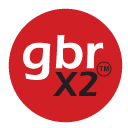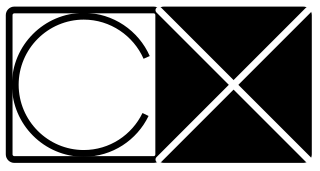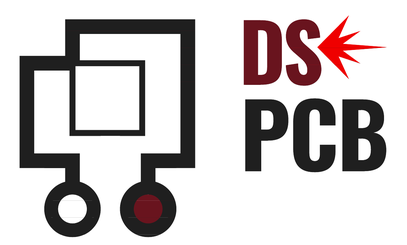
A prototype is an early sample, model, or release of a product built to test a concept or process. It is a term used in a variety of contexts, including semantics, design, electronics, and software programming. A prototype is generally used to evaluate a new design to enhance precision by system analysts and users. Prototyping serves to provide specifications for a real, working system rather than a theoretical one. In some design workflow models, creating a prototype is the step between the formalization and the evaluation of an idea.

The Gerber format is an open ASCII vector format for printed circuit board (PCB) designs. It is the de facto standard used by PCB industry software to describe the printed circuit board images: copper layers, solder mask, legend, drill data, etc.

EAGLE is a scriptable electronic design automation (EDA) application with schematic capture, printed circuit board (PCB) layout, auto-router and computer-aided manufacturing (CAM) features. EAGLE stands for Easily Applicable Graphical Layout Editor and is developed by CadSoft Computer GmbH. The company was acquired by Autodesk Inc. in 2016.

CADSTAR is a Windows-based electronic design automation (EDA) software tool for designing and creating schematic diagrams and printed circuit boards (PCBs). It provides engineers with a tool for designing simple or complex, multilayer PCBs. CADSTAR spans schematic capture, variant management, placement, automatic and high-speed routing, signal integrity, power integrity, EMC analysis, design rule checks and production of manufacturing data.

TARGET 3001! is a CAD computer program for EDA and PCB design, developed by Ing.-Büro Friedrich in Germany. It supports the design of electronic schematics, PCBs, and device front panels. It runs under Windows and is available in English, German and French.

OrCAD Systems Corporation was a software company that made OrCAD, a proprietary software tool suite used primarily for electronic design automation (EDA). The software is used mainly by electronic design engineers and electronic technicians to create electronic schematics, perform mixed-signal simulation and electronic prints for manufacturing printed circuit boards (PCBs). OrCAD was taken over by Cadence Design Systems in 1999 and was integrated with Cadence Allegro since 2005.

CX is a noise reduction system for recorded analog audio. It was developed by CBS Laboratories in the late 1970s as a low-cost competitor to other noise reduction (NR) systems such as dbx disc and High-Com II, and was officially introduced in 1981. The name CX was derived from "Compatible eXpansion", a feature of the technique.
Zuken Inc. is a Japanese multinational corporation, specializing in software and consulting services for end-to-end electrical and electronic engineering. Zuken came into existence as a pioneer in the development of CAD systems in Japan to contribute to electronics manufacturing. The literal translation of Zuken is "graphics laboratory." Established in 1976 in Yokohama, Japan, it is listed on the Tokyo Stock Exchange; net sales amounted to US$216 million for the year 2011.
Electronics Today International or ETI was a magazine for electronics hobbyists and professionals.

KiCad is a free software suite for electronic design automation (EDA). It facilitates the design and simulation of electronic hardware. It features an integrated environment for schematic capture, PCB layout, manufacturing file viewing, SPICE simulation, and engineering calculation. Tools exist within the package to create bill of materials, artwork, Gerber files, and 3D models of the PCB and its components.
Altium Limited is an Australian multinational software company that provides electronic design automation software to engineers who design printed circuit boards. Founded as Protel Systems Pty Ltd in Australia in 1985, the company has regional headquarters in the United States, Australia, China, Europe, and Japan. Its products are designed for use in a Microsoft Windows environment and used in industries such as automotive, aerospace, defense, and telecommunications. Its flagship product, Altium Designer, is a software for unified electronics design.
CR-5000 is Zuken's design suite for electronics systems and printed circuit boards aimed at the enterprise market. It was developed to tackle complex design needs that involve managing the complete development and manufacturing preparation process on an enterprise-wide scale. CR-5000 offers relevant functionality for the design of complex and high-speed boards, addressing design challenges such as signal integrity and electromagnetic compatibility.
This page is a comparison of electronic design automation (EDA) software which is used today to design the near totality of electronic devices. Modern electronic devices are too complex to be designed without the help of a computer. Electronic devices may consist of integrated circuits (ICs), printed circuit boards (PCBs), field programmable gate arrays (FPGAs) or a combination of them. Integrated circuits may consist of a combination of digital and analog circuits. These circuits can contain a combination of transistors, resistors, capacitors or specialized components such as analog neural networks, antennas or fuses.

PCB is a free and open-source software suite for electronic design automation (EDA) - for printed circuit boards (PCB) layout. It uses GTK+ for its GUI widgets.

DesignSpark PCB is a free electronic design automation software package for printed circuit boards. Although there is no charge for the software, the user must register with the website to unlock the program and it displays advertisements which must be acknowledged before the user can begin working.

Electronica is a trade fair for the electronics industry. The exhibitors who participate in it present electronic components, systems, applications and services.

Pulsonix is an electronic design automation (EDA) software suite for schematic capture and PCB design. It is produced by WestDev, which is headquartered in Gloucestershire, England, with additional sales and distribution offices overseas. It was first released in 2001, and runs on Windows.
CircuitMaker is electronic design automation software for printed circuit board designs targeted at the hobby, hacker, and maker community. CircuitMaker is available as freeware, and the hardware designed with it may be used for commercial and non-commercial purposes without limitations. It is currently available publicly as version 2.0 by Altium Limited, with the first non-beta release on January 17, 2016.

The Proteus Design Suite is a proprietary software tool suite used primarily for electronic design automation. The software is used mainly by electronic design engineers and technicians to create schematics and electronic prints for manufacturing printed circuit boards.
Douglas Self is a British electronics engineer and author with a particular interest in audio. He received a first class honours degree in engineering from Cambridge University, and then studied psychoacoustics at Sussex University. He is the author of six books on audio electronics, published by Focal Press. He has also contributed many articles to Wireless World magazine, some of which were compiled into a book along with articles by Peter Baxandall.













